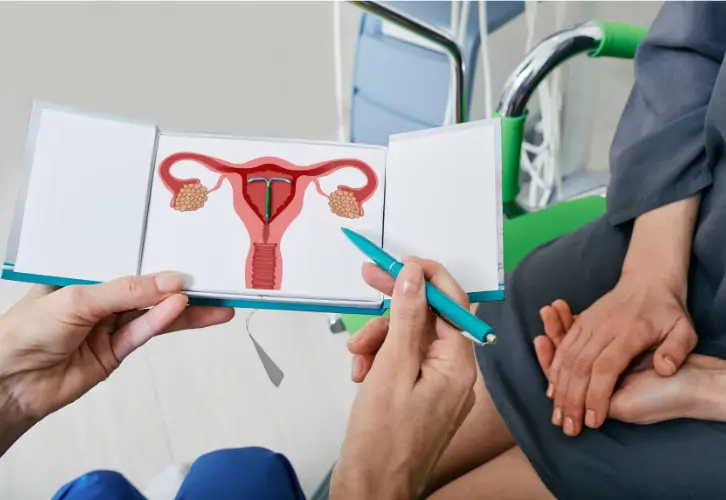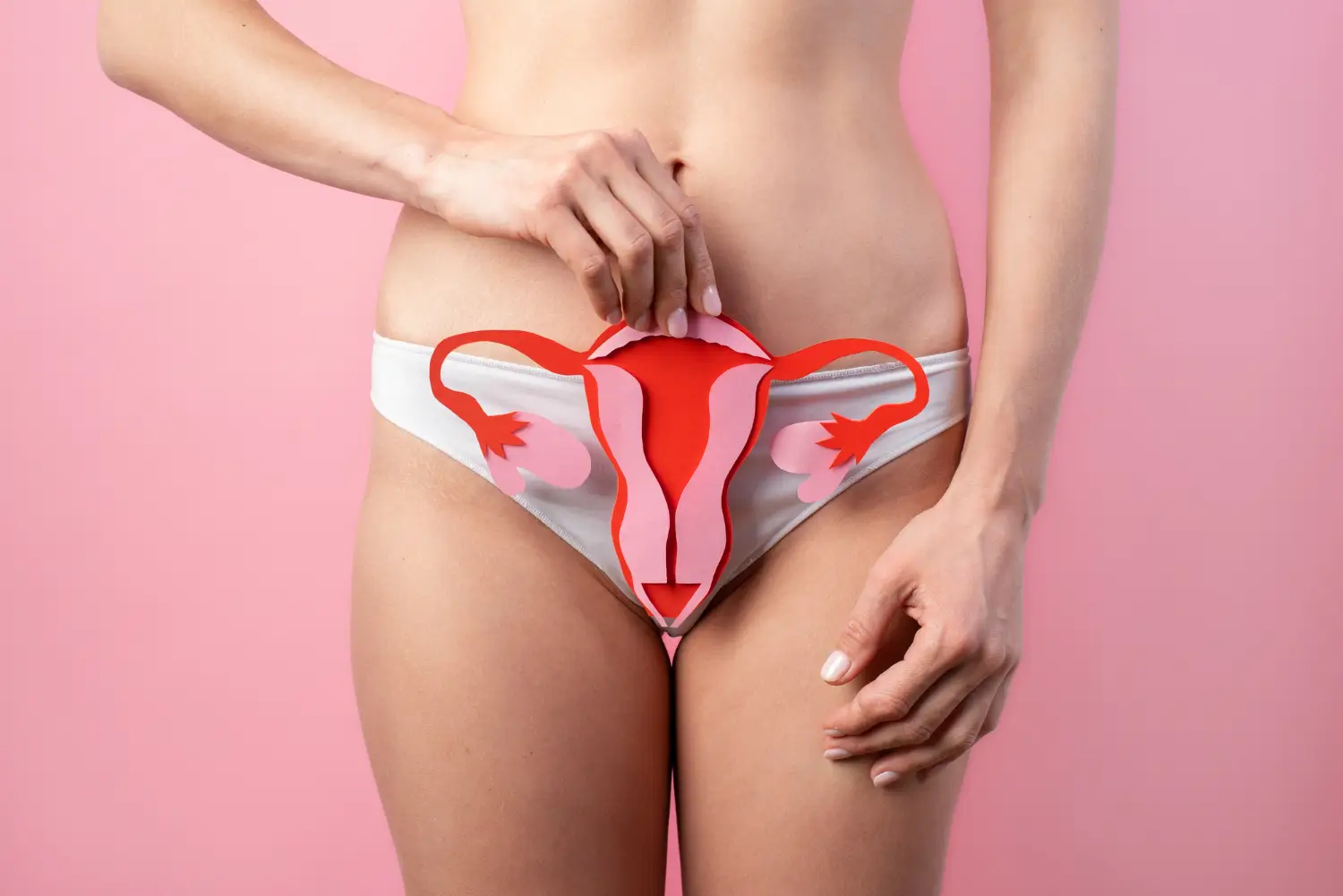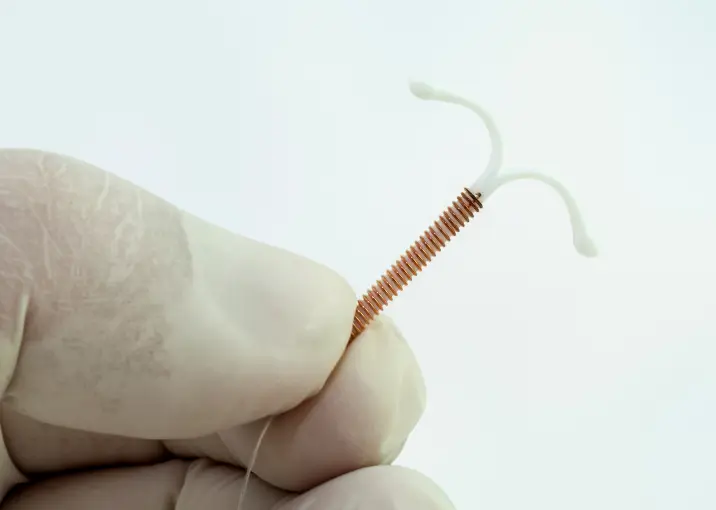
Endometriosis, which affects about 10% of reproductive-age women worldwide, is a chronic condition often associated with severe pain during periods, intercourse, and everyday activities. As researchers explore new treatment options, the Mirena intrauterine device (IUD) has gained attention for its potential to provide symptom relief.
Mirena is a small, T-shaped IUD that releases progestogen directly into the uterus. While it is primarily used for contraception, studies have shown that it can effectively manage endometriosis symptoms, offering women a long-term, non-surgical option for pain relief.
This article will examine how Mirena works, its benefits, and its role in reducing the painful symptoms of endometriosis.
Key Takeaways
- Mirena IUD is a viable treatment option for managing endometriosis.
- The levonorgestrel released by Mirena can help reduce the growth of endometrial tissue and alleviate symptoms like pelvic pain and heavy menstrual bleeding.
- Clinical studies and patient testimonials support the effectiveness and safety of Mirena for endometriosis.
- Mirena offers advantages over other treatment options such as oral contraceptives and surgical interventions.
About: DoctorMedica is your trusted supplier of top-quality dermal fillers, viscosupplements, and more for your medical practice. We offer genuine products from leading brands at the lowest prices in the market. If you’re looking to buy Mirena wholesale for your practice, the sales representatives at Doctor Medica can give you guidance.
Understanding Endometriosis and Its Symptoms
Endometriosis is a condition where tissue similar to the uterine lining grows outside the uterus, leading to severe pain, heavy periods, and other symptoms that can significantly affect daily life.

Although it doesn’t cure endometriosis, the Mirena IUD, which releases the hormone levonorgestrel, helps manage these symptoms by reducing menstrual pain and slowing the growth of endometrial tissue. Studies show that women using Mirena often experience substantial pain reduction, particularly within the first 12-18 months.
Common Symptoms of Endometriosis
Endometriosis can present a wide range of symptoms that deeply affect those living with it:

- Pelvic Pain: This is the most common symptom, often intensifying during menstrual periods.
- Heavy Menstrual Bleeding: Many women experience abnormally heavy and painful periods.
- Spotting Between Periods: Unexpected spotting or bleeding between menstrual cycles is also frequent.
- Pain During or After Sex: This can significantly impact intimate relationships and overall quality of life.
- Painful Bowel Movements or Urination: These symptoms often worsen during menstrual periods.
- Chronic Fatigue: Persistent tiredness is a common but often overlooked symptom.
- Gastrointestinal Issues: Bloating, diarrhea, and constipation are frequently reported.
- Infertility: Endometriosis can make conception difficult for some women.
- Lower Back and Leg Pain: Pain often radiates beyond the pelvic area.
These symptoms can profoundly disrupt daily routines, making it essential to find effective symptom management strategies.
Impact of Endometriosis on Daily Life
Endometriosis often leads to significant pain, heavy bleeding, and chronic discomfort that can interfere with work, social activities, and personal relationships. The Mirena IUD offers an effective treatment option, as it releases hormones that reduce pain and bleeding for up to five years.
While Mirena IUD insertion may be uncomfortable, especially for those already in pain, this treatment is considered an effective option for symptom relief and preventing the condition from worsening, avoiding the need for surgery.
Mirena IUD as a Treatment for Endometriosis
The Mirena IUD is an effective treatment option for managing endometriosis symptoms. It releases levonorgestrel, a hormone that works locally within the uterus to reduce the growth of endometrial tissue, which is a key factor in alleviating endometriosis-related pain. By thinning the uterine lining, Mirena also significantly decreases heavy menstrual bleeding, a common and debilitating symptom of the condition.

Research indicates that many women experience marked relief from pelvic pain within the first 12 to 18 months of using Mirena, with continued benefits lasting up to five years. This makes Mirena an appealing long-term solution for those with endometriosis, offering substantial symptom management without the need for daily medication or invasive surgical procedures.
Effectiveness and Safety of Mirena for Endometriosis
Scientific research indicates that the Mirena IUD is an effective solution for endometriosis management. This method mitigates discomfort and impedes the excessive growth of endometrial tissue.
A randomized clinical trial found that the Mirena IUD, when used alone or in combination with anastrozole, significantly improved symptoms of endometriosis over 6 months. The study reported a 43% improvement in symptoms, maintained for up to 2 years.
Likewise, a comprehensive review compared eight national and international guidelines for endometriosis treatment. It highlighted that progestogens, including those released by the Mirena IUD, are recommended for managing endometriosis-associated pain.
Studies also indicate that the Mirena IUD is effective in reducing period pain over three years, with most improvements occurring within the first 12-18 months. This makes it a viable long-term treatment option for women with endometriosis.
Patient Testimonials with Mirena for Endometriosis
People with endometriosis have shared their stories about using Mirena. Many say it helps a lot. They see less pain and fewer heavy periods after getting the IUD. This matches what doctors see too.
- serialmanbearpig: “Mirena has been the best thing to keep my endo pain under control. I’m on my third one now, and while getting a new one put in every five years is horrific, it is well worth it for me! Everyone seems to have very different experiences with IUDs, so I can only speak to my own, but I recommend giving it a shot.”
- Bi: “…If your periods are heavy and really impact your daily life, I highly recommend it. Having no period was the best, I didn’t have to plan around my cycle or anything! And no money spent on pads and tampons! I personally had no adverse side effects, though I will say because of the drug in Mirena, tracking ovulation was difficult and I often times skipped it altogether…”
Comparing Mirena with Other Treatment Options for Endometriosis
Looking at Mirena versus other treatments opens up new viewpoints on managing endometriosis. It lets us weigh its benefits and drawbacks against pills and surgery, leading to a well-rounded choice for patients.
- Mirena vs. Oral Contraceptives: Mirena IUD and oral contraceptives both manage endometriosis effectively but differently. Mirena releases levonorgestrel into the uterus for up to 5 years, reducing pain and slowing tissue growth. Oral contraceptives, taken daily, regulate hormones to lessen menstrual discomfort. Mirena’s convenience and long-term use appeal to some, while others prefer daily pills due to concerns about IUD side effects or placement.
- Mirena vs. Surgical Interventions: Surgery can remove endometrial tissue but involves risks and recovery. The Mirena IUD offers a less invasive alternative, releasing hormones directly into the uterus for up to five years to reduce pain and bleeding. Many find relief with Mirena, experiencing symptom improvement within the first 12-18 months, making it a viable option for long-term endometriosis management.
Conclusion
The Mirena IUD provides significant relief for endometriosis by effectively reducing pain and slowing the growth of endometrial tissue for up to five years. It enhances quality of life by lessening heavy bleeding and discomfort, making everyday activities more manageable.
While it does have some associated risks and side effects, the benefits of Mirena often outweigh these concerns, offering a reliable treatment option when other therapies may not provide adequate relief.
FAQs
1. What is the Mirena IUD, and how long does it last?
The Mirena IUD is a hormonal intrauterine device used for contraception and managing conditions such as endometriosis and polycystic ovary syndrome (PCOS). It is effective for up to 5 years.
2. Can Mirena help with menopause symptoms?
Yes, Mirena may alleviate some menopause symptoms due to its hormonal release, although individual responses can vary.
3. What are the side effects of the Mirena IUD?
Common side effects include spotting between periods. Rarely, neurological side effects may occur.
4. Is there a connection between Mirena and spotting?
Yes, spotting or irregular bleeding is a common side effect of Mirena, particularly in the initial months after insertion.
References
Bano K. Endometriosis: Symptoms, causes, diagnosis and treatments. Published January 1, 2021. https://www.msn.com/en-us/health/condition/Endometriosis/hp-Endometriosis?source=conditioncdx
endometriosis.org. Mirena – Endometriosis.org. https://endometriosis.org/treatments/mirena/#google_vignette
Related Articles
Joanna Carr
How to Achieve Natural-Looking Results with Hyacorp Fillers: Before and After Examples
Explore the natural-looking outcomes of Hyacorp fillers through before and after illustrations. Gain insights from Doctor Medica.
Joanna Carr
Nabota Botox Reviews and Information
Nabota is a botulinum toxin type A product that has gained popularity in the aesthetic industry.
Joanna Carr
What Is Botox Brow Lift?
Have an interest in learning about What Botox Brow Lift Is? Browse Doctor Medica's extensive archive of blog postings.


